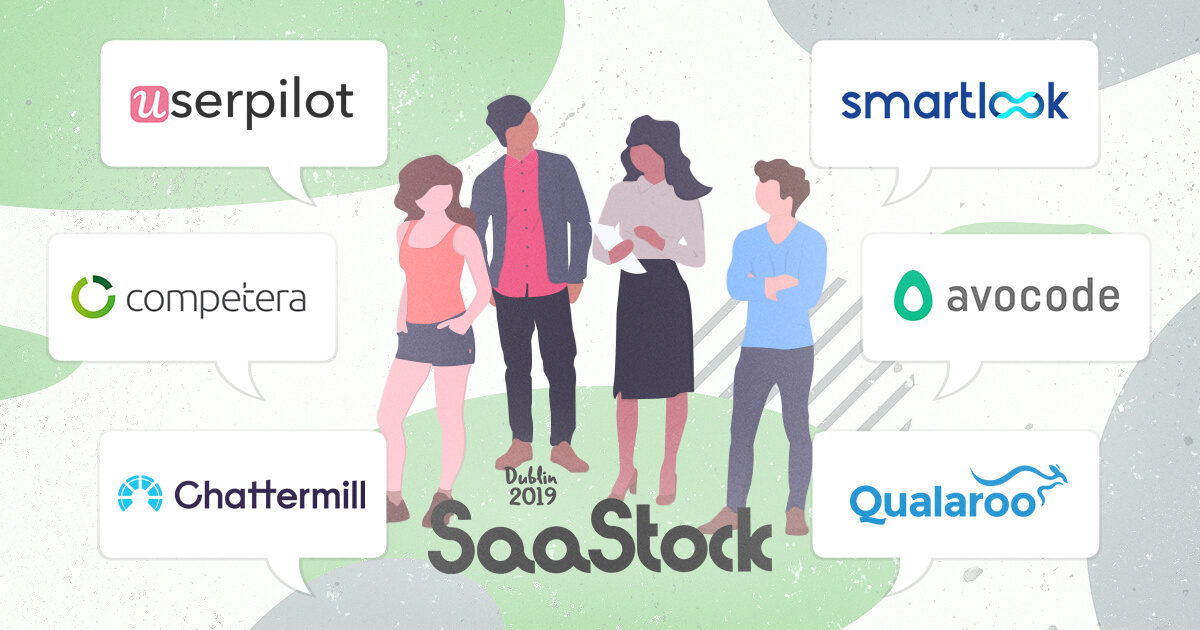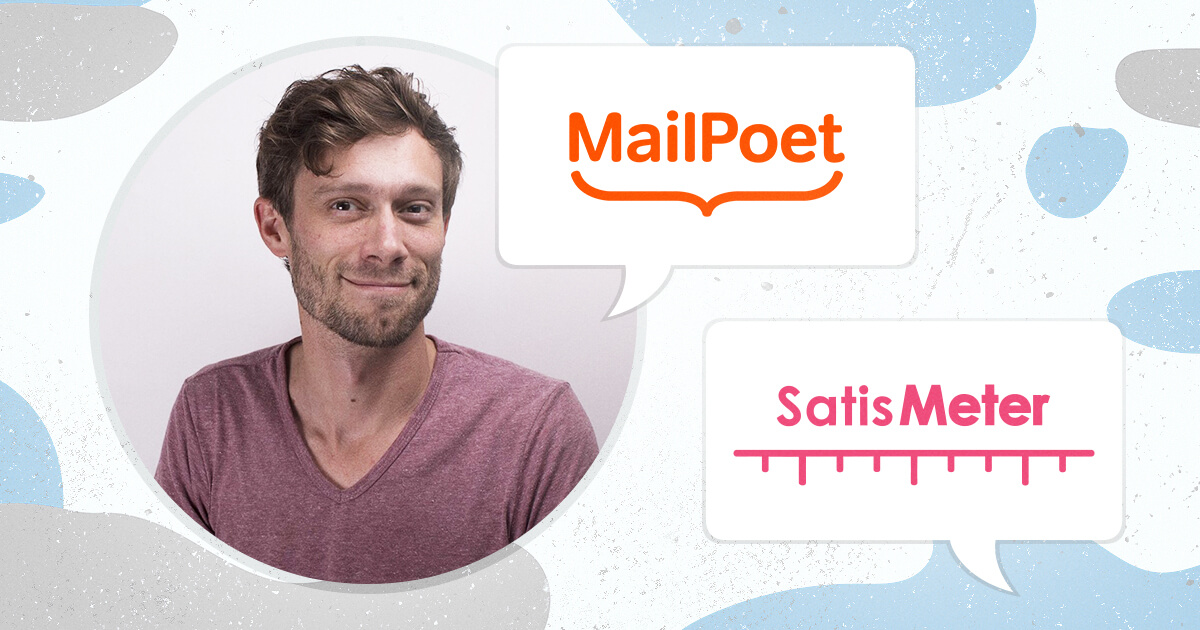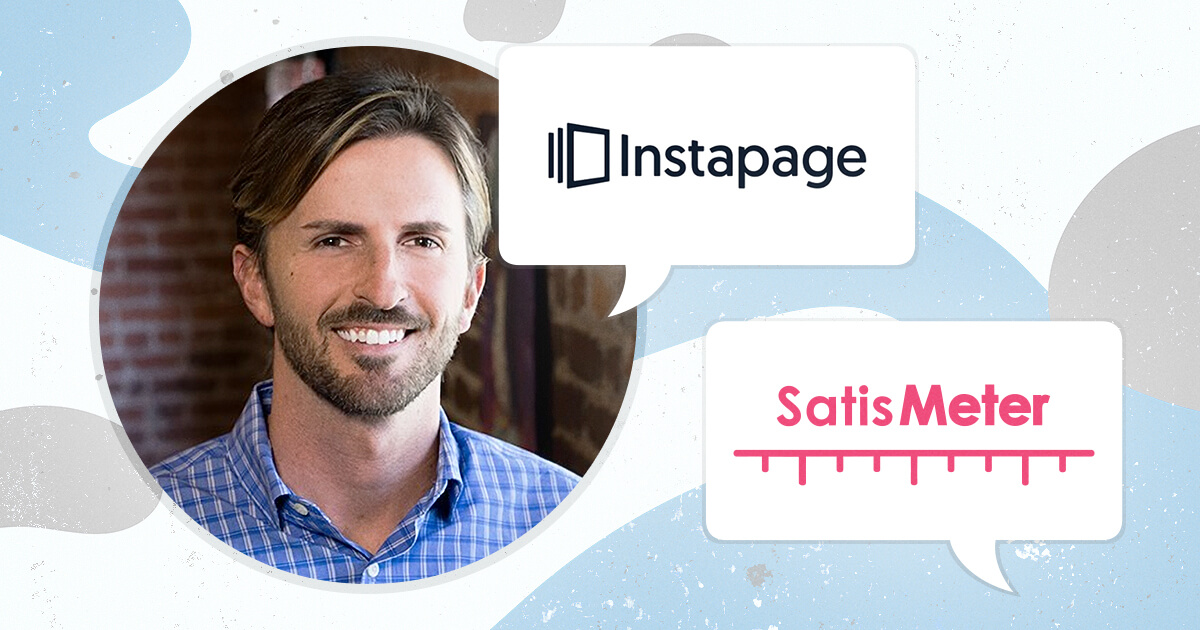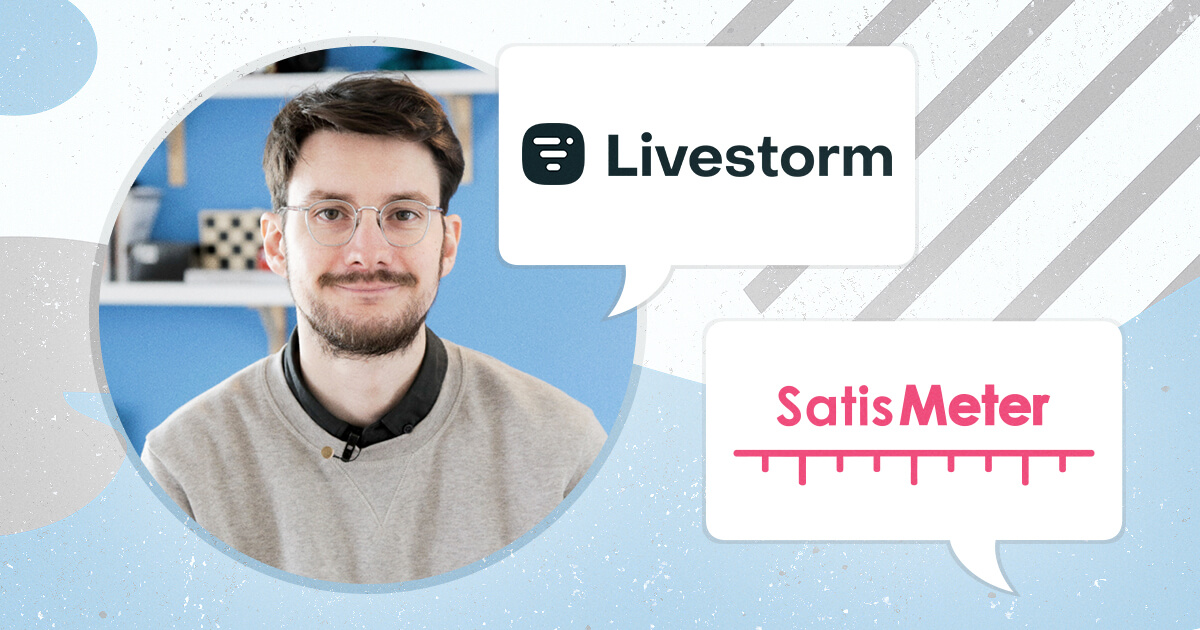As we strive to help our users make their customers happy, the current thinking about Customer Success and Satisfaction is vital to us as a company. To provide the best user feedback solutions, we need to know what people want and why.
Like a great number of companies, we take the opportunity each year to attend SaaStock Dublin. It’s one of the biggest events of our year, and a great chance to catch up with users, partners, and meet new people who have something in common with us.
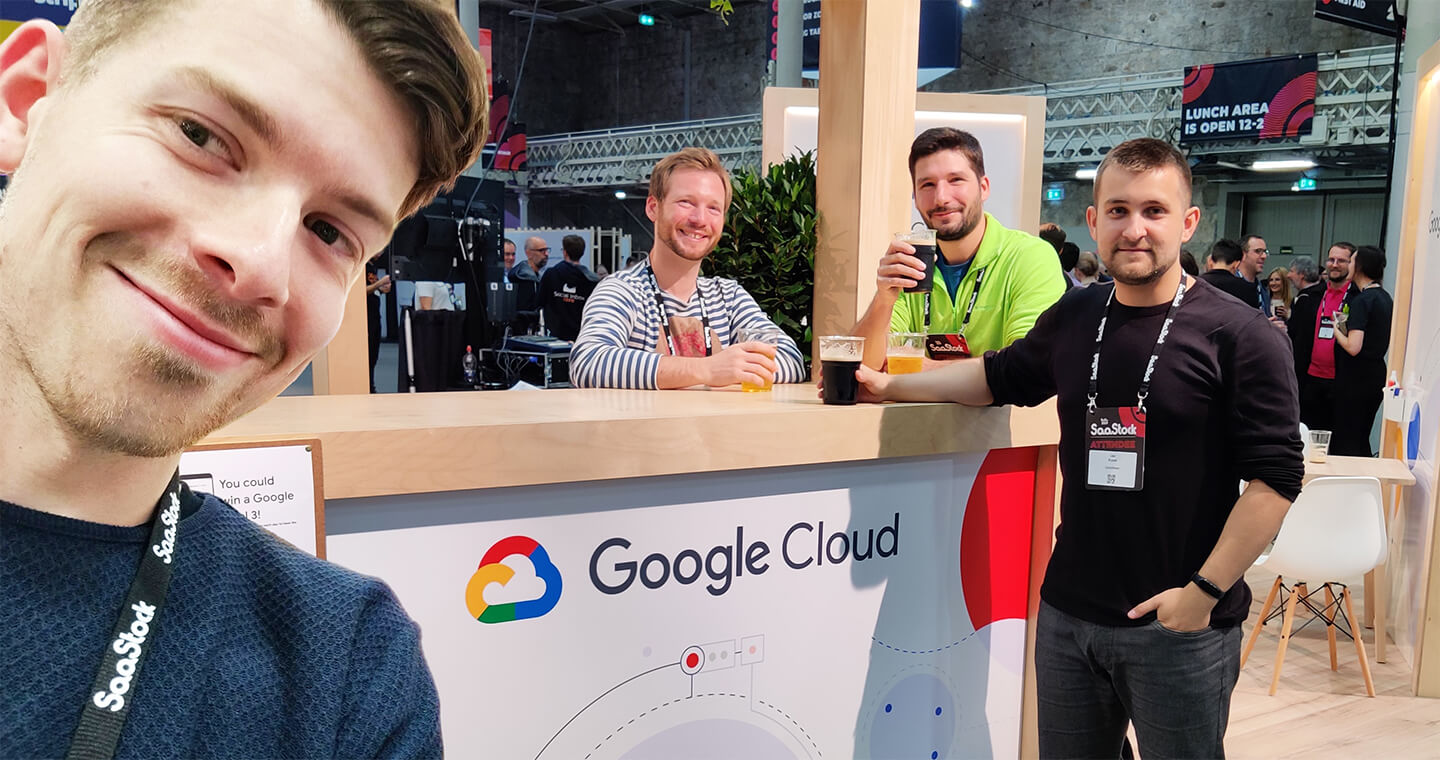
SatisMeter team at SaaStock 19 (Petr, Ondrej, Jakub, Jan)
This year, we decided to take that opportunity a step further, and use this wonderful resource to take a measured look at the state of Customer Success. We spoke to a range of different stage companies, and asked about their opinions, priorities, and practices.
The results we present to you here, as a real overview of current approaches to Customer Success and satisfaction. To keep things representative we spoke to a range of different companies, here they are.
The Companies
Userpilot
Relatively new players on the SaaS stage, Userpilot got up and running in 2017. They help companies improve their onboarding and UX by automating messages and walk throughs based on user context.
Chattermill
London-based Chattermill, with enterprises such as Uber, TransferWise, and Deliveroo under their belts have plenty of real life experience pleasing enterprise scale users. They apply artificial neural networks to customer feedback which allow for speedy sentiment analysis and prioritizations.
Qualaroo
Qualaroo is a well-known name to us and many others who work on or with user feedback. We were excited to talk to them about user satisfaction and how they make it a priority.
Competera
With quite a different model from our other companies, Competera stand out because they’re firmly working within the stage of e-commerce. While a SaaS company themselves, their users aren’t. They provide a platform which simplifies optimising prices.
Smartlook
A smaller SaaS analytics business, Smartlook are close to us both in their mentalities and their location (based in the Czech Republic as we are). Founded in 2016 but growing rapidly, their reputation is based on innovative ways of assessing customer behaviour.
Avocode
Another of our neighbours, Avocode keep a lively office in Prague and offer comprehensive and time saving solutions for designers and developers. Their team is growing rapidly and polishing up their customer success efforts with both enterprise and individual customers.
Customer Success Attitudes
We started out with fairly basic questions about how Customer Success is viewed and prioritized at these companies. Even as part of such a general question it was clear that priorities aren’t always matched.
Working with Enterprise customers, Chattermill are clear that it needs to be gotten right every single time. Founder and CEO Mikhail told us:

Mikhail Dubov, CEO at Chattermill
“Customer Success is absolutely crucial to Chattermill. We are an Enterprise SaaS company and our customers expect top service. We are also ourselves huge believers in the value of great experience and want to make sure our clients are always excited to use us.”
Competera, working with many more users on an occasional and casual basis, naturally need to process support and success differently. Anna, head of marketing, told me:
“By necessity our team uses two approaches for customer success: high-touch and low-touch models, depending on the customer segment. At the same time, no matter which approach customer is assigned to, it is always human-centric, followed by best practices, and designed to reach customer goals.”
Unsurprisingly Qualaroo jumped straight into the details of what’s new for them, having developed a unique usage score to streamline their Customer Success processes, CEO Paulina explained:
“The usage score allows us to predict which customers are at high risk for churn within the next 3-6 months and to personalize communication across different segments of our customers based on their score. To calculate usage score, we use a number of data points like how many active Nudges™ a customer has per month, which advanced features they use or how many and which integrations they utilize and more. This is then combined with a plan type. We continuously improved the Usage Score over several months and now it proves to be a reliable and very helpful metric for our business.”

Anthony Hill, Head of Customer Success at Smartlook
Smartlook take a long-term approach to their users, focusing on education. Their Head of Customer Success Anthony told me:
“Our customer success approach is multifaceted and fluid. We’re constantly coming up with new methods of measurement which can change and grow in complexity. But, the main undercurrent which hasn’t changed for a long time is education through engagement. We always try to make the learning process as simple as possible so that our customers can find answers to their questions.”
Tools
A general overview is a great starting point, but of course we also wanted the specifics, which tools are these companies using, and what makes them stand out?
Aazar, Head of Growth from early stage Userpilot explained:
“We’re using UserPilot to evaluate what people are doing inside the app, it also works as part of a Customer Success solution. We have a simple feedback form and gather NPS too. What we’re lacking at the moment are targeted and specific surveys, I think that’s something we’ll be looking to start with soon.”
Smartlook are another team making an innovative use of their own technology. Anthony tells me:
“Our success team uses Google Data Studio and Smartlook for key metrics and then Smartlook exclusively for further analysis. It’s quite a simple approach and a very similar style to the way our customers use Smartlook to solve problems: #1 Use metrics to identify potential issues #2 Use Smartlook to confirm and react.”
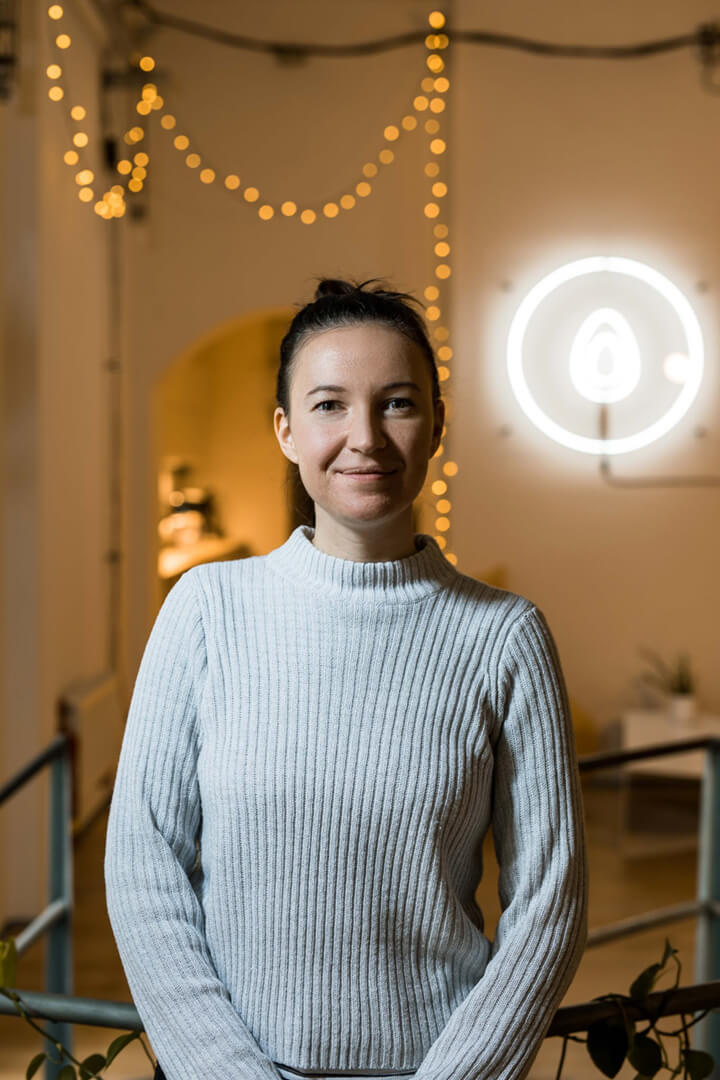
Zuzana Bartkova, Head of Customer Success at Avocode
Like many others, Avocode make the most of everything that Intercom has to offer and work with user feedback. Zuzana, head of Customer Success said:
“One of our favorite tools is Intercom which allows us to have chat inside our app so we are always there when our customers need us. Also, lets not forget about feedback. Feedback is what helps us grow. We don’t just send it to some product owner but we carefully store it inside Productboard and use it for shaping our product.”
Competera weren’t using any specialized tools for Customer Success or support, though they did hope to in the future. Meanwhile the guys at Chattermill have what we’d think of as a more conventional stack to cater to their Enterprise customers.
“We believe in the power of tools and use a few different ones. Intercom is our main Customer Engagement / Customer Support / Helpdesk solution, where we store everything we need to proactively engage users and solve their issues quickly. We also use Vitally as our main Customer Success hub, with full history on each client including engagement data, analytics etc. Occasionally we use G2 for reviews.”
Customer Journey Mapping
This is a subject we’re becoming more and more interested in here at SatisMeter, both to do it for ourselves and find out how our services can help our users succeed in their own mapping. Naturally we asked our interviewees if it’s something they’ve tried, and if they’ve had much success.
Chattermill explained that because their users are mainly on an Enterprise level, they have a hands-on and personal relationship with each, and this hasn’t been necessary for them as a company yet. Userpilot likewise have an idea of customer journeys inside their app, but not the full picture.
The Smartlook team take a pragmatic approach and map issues on an ongoing basis.
“This is something we are doing internally, taking key indicators of product engagement, daily use measurements, and many other metrics are categorized into short-term and long-term customer goals.”
Anna from Competera had more to say on the matter.
Anna Belous, CMO at Competera
“We’ve been doing customer journey mapping in different ways. One of them was a kind of retrospective on the customer journey in our company, starting from acquisition. Reviewing the milestones customer passes on the way to reaching his goals with Competera, we analyzed all the client interactions with different departments.
We tried to put ourselves in customer shoes and describe the experience as they have it, based on the feedback they provide. This helped us to focus on comprehensive customer experiences with our product and service, define bottlenecks, and create an action plan. We managed this all using tables in Google Sheets or Jira Confluence, and visualization with draw.io.”
Qualaroo have three priorities when mapping customer journeys, something they’re trying to do on a more regular basis.

Paulina Wójciak, CEO at Qualaroo
“We’ve done journey mapping twice within the last 12 months and we want to keep doing it every 6 months or so. Our product is changing so we want to make sure after a bulk of changes we map the experience of our users to see if and how it changed in relation to what we implemented.
Mapping the customer journey is about 3 things for us.
- To understand users experience in any given moment of interaction with our product or company to discover new opportunities
- To find issues that make it difficult for our users to have a smooth experience
- Most importantly – to identify moments of truth, moments that impact the overall experience the most.”
In terms of tools used their approach was far more organic, just relying on what came easily to them. “We haven’t used any specific tool for mapping. We just spoke directly with our customers and based on the information we collected, we drew an experience map on large sheets of paper, filling it with post-it notes and remarks.”
Making Changes
One thing we always take as a sign of a company’s commitment to user feedback is how and why they’ve implemented it. We’re not saying every customer’s suggestion should be acted on immediately, but if it’s always ignored something isn’t working right. We asked what changes had been made on the basis of feedback recently.
Chattermill told us that feedback drives the shape of their product roadmap, an idea we’re more than familiar with as it drives ours too. We use ProductBoard to ease this process (you can see our public platform for user suggestions right here!).
Userpilot also reported on something we’re familiar with, feedback helping to fix simple user misunderstanding. Aazar told me:
Aazar Ali Shad, Head of Growth at Userpilot
“We realized through feedback that a number of users had a feature which prevented them from using a certain pop-up model. That was partly down to user misunderstanding and flaws in our design, but our feedback loops let us know about it and we were able to fix it.”
Qualaroo have very specific recent updates based on feedback, and are beginning to apply it in new areas.
“Right now, we are building two things that came directly from users’ feedback.
- A different way of setting up questions – per our users’ requests, very soon it will be via drag and drop functionality.
- New question types. Qualaroo allows you to ask questions to your user in a native way – from within your product. But our customers use us to satisfy very different goals and use cases so they also need more variety in terms of question types they can ask. Our current offering was not meeting their needs as fully as we would like, so we decided to widen our question types.
However, it’s not only the product that is changing based on our users’ feedback. We also ask our blog readers what they would like to read about and create content based on their needs and interests.”
Challenges
One interesting fact which we gathered from our interviews was that all companies, no matter the size, struggled with knowing what to act on and what to let rest. Everyone we spoke to mentioned the tension between giving customers what they ask for, and sticking to the vision you have for your product or service.
Anna from Competera told us simply that managing expectations for new features was the greatest challenge they face when dealing with Customer Success, and likewise Paulina from Qualaroo told us:
“The greatest challenge is handling a number of feature and personalization requests we receive from our customers. Although sometimes it is very difficult to say “no” to customers, we also don’t want our vision for Qualaroo to be diluted along the way. We don’t want to be everything for everyone, but we do want our users to be happy and our product to be more intuitive and helpful.”
Zuzana at Avocode made the same point, telling me:
“Listening to the actual needs of customers and setting up the right expectations. We always try to be honest with our users because it is a long term relationship that we want to build and not just something instant. “
Finding the right balance between company goals and user needs seems to be the biggest tension currently felt in the Customer Success field, we look forward to the innovative solutions and opinions which will surely be coming soon on the topic.
We’d love to know how your business approaches Customer Success, and what the greatest challenges are. If you have feedback for us we want to hear it here, and if you want to gather feedback of your own we’re ready to help!
